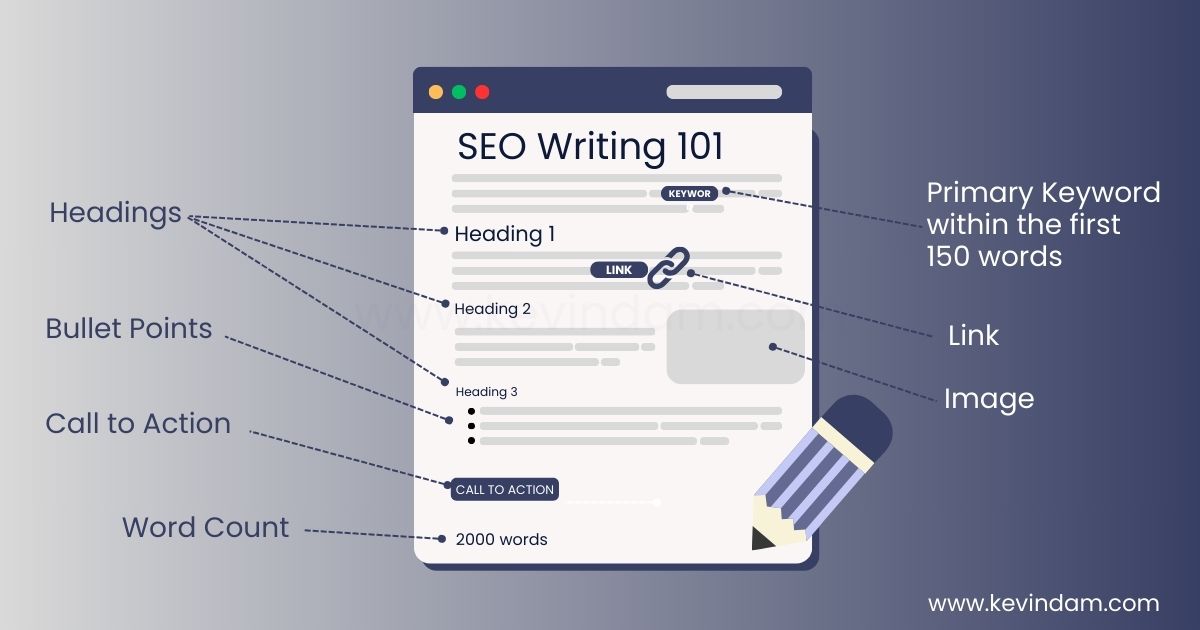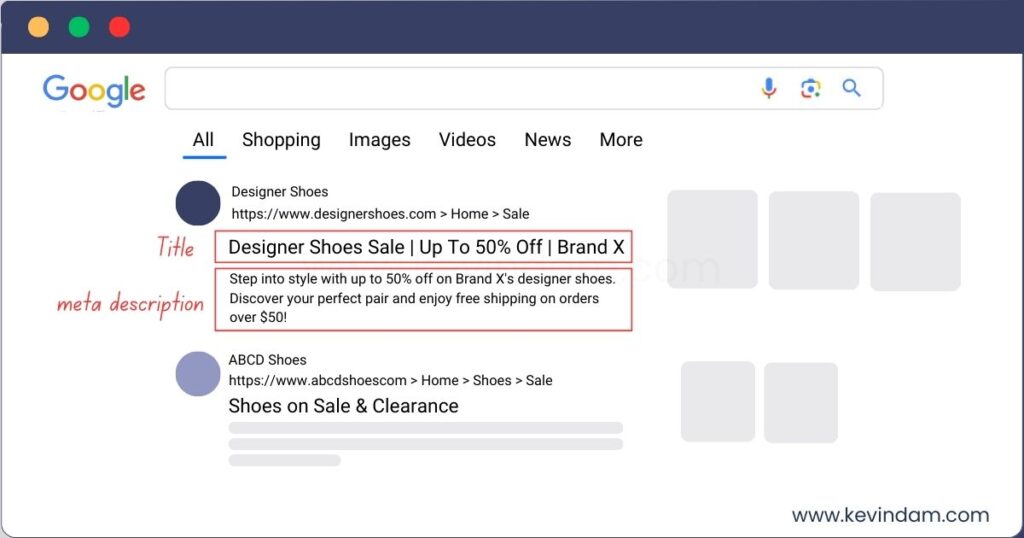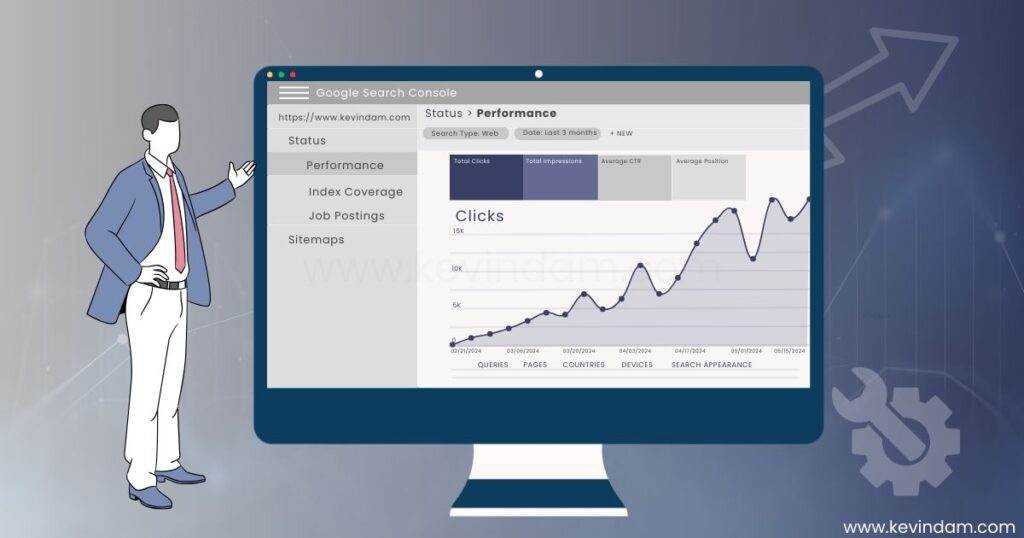
Last Updated July 22, 2024
SEO Content Optimisation Tips: A User-Friendly Guide

Want to reach a larger audience? Start by optimising your content! As an SEO specialist, I’ve seen firsthand how powerful content optimisation can be. While some might think content optimisation is all about climbing search engine rankings, the trick is to focus on engaging your target keywords, optimising meta tags, creating high-quality and engaging content, and incorporating relevant internal and external links to ensure that your piece of content stands out and attracts organic search traffic.
This article discusses content optimisation strategies to ensure your content ranks for relevant search queries. It also includes enhancing website usability and mobile friendliness and staying updated with the latest SEO trends and algorithm changes.
Use tools like Google Analytics, SEMrush, Moz, and the Yoast SEO plugin to track performance, conduct keyword research, analyse competition, and check if your content meets SEO standards.
Why is content optimisation important?
Optimising your content through effective SEO strategies is crucial for enhancing search engine rankings and engaging users. According to a study, 90% of businesses employ content marketing strategies, while 72% of marketers reported improved engagement through content marketing efforts.
Below is a brief guide on what focus areas you should optimise in your content.
| Section | Key Focus Areas |
| Keyword Optimisation | Target keyword, relevant keywords, search volume |
| Content Quality | High-quality content and user experience |
| Technical SEO | Internal links, title tags, and meta description |
| Content Structure | Content structure, search intent |
| Link Building | Internal linking, external links |
- Prioritise keyword optimisation without keyword stuffing.
- Structure your content to cater to the readers’ search intent.
- Create compelling, relevant, and helpful content tailored to your target audience.
- Ensure the technical elements, like meta descriptions and title tags, are in place.
- Maintain a network of internal and external links for better navigation and authority.
Short and readable paragraphs, coupled with smart formatting, ensure that the essence of SEO content optimisation is captured efficiently and effectively.
Knowing Your Audience: The Foundation of SEO
Understanding your audience lies at the heart of effective content optimisation. While technical SEO plays a crucial role, the primary goal is to create content that truly resonates with real people. By understanding your audience’s needs, preferences, and online behaviours, you can craft compelling content that not only ranks well but also forges authentic connections and delivers value.
When crafting SEO content, it’s crucial to transcend mere keyword placement. A deep understanding of your target audience reveals the content they crave, the language that captivates them, and the solutions they seek. This approach not only enriches the user experience but also aligns with search engines like Google, thereby enhancing the delivery of relevant and personalised content to users.
Empathising with your audience’s challenges and expectations empowers you to refine your content marketing strategies for precise targeting and significant impact. This method enhances search engine rankings organically by aligning your content with users’ search intentions.
Optimising Your Content for Search Engines (and Humans!)
Crafting content that stands out in search engine rankings and engages your audience requires a fine balance. SEO isn’t just about impressing search engines; it’s about crafting experiences that truly connect with people. To achieve this, you need to blend technical SEO know-how with a real understanding of what your audience wants. This balanced approach ensures your content reaches the right users and keeps them hooked.
Here are the steps you can follow to make your content more effective:
1. Conduct Thorough Keyword Research

Content optimisation starts with thoroughly conducting keyword research. However, resourceful keyword research goes beyond search volume; it includes understanding the language and queries used by your audience. Utilise keyword research tools to uncover the search terms related to your primary keywords. This will help you discover relevant secondary and long-tail keywords that attract more targeted visitors.
Ensure your primary keyword is used within the initial 100 words, and include secondary keywords and related terms as naturally as possible.
2. Satisfy User Search Intent
Digging deeper into the minds of your website visitors reveals the “why” behind their questions, also known as search intent. Grasping search intent is better for creating content that meets user needs throughout their journey. There are four main types of search intent to think about:
Recognising the different search intents can improve content relevance and enhance the user experience, leading to higher engagement and conversion rates.
3. Utilise the Power of Personas
Crafting user personas enhances your understanding of the audience, making content more engaging. Personas create vivid representations of your target audience, helping you see and relate to potential customers by exploring their demographics, challenges, motivations, and online behaviours, all to enhance your content.
These can be done through customer surveys, social media interactions, and analytics. For instance, a persona for an online electronics retailer might be ‘Tech-savvy Tina,’ a mid-20s software developer who values the latest gadgets but is also budget-conscious. Knowing Tina’s unique characteristics helps create relevant product reviews, comparison articles, and buying guides that resonate with her and similar users.
Embracing the power of personas helps you deliver content that speaks directly to the concerns and aspirations of your audience, making your SEO efforts more impactful and your content more likely to rank higher and earn that coveted organic traffic.
4. Create High-Quality Content
High-quality content is the cornerstone of a successful SEO strategy. Content that provides value through unique insights, comprehensive information, and a fresh perspective will engage readers and encourage them to stay longer, reducing the bounce rate and signalling to search engines that your content is worthy of a high ranking.
In your content creation process, prioritise originality and depth. Conduct original research or provide data-driven insights to set your content apart. A well-rounded piece of content often includes:
- Expert opinions or quotes
- Original case studies or findings
- Engaging multimedia elements like images, videos, and infographics
- Clear, action-oriented calls-to-action (CTAs)
Ensure each piece of content is crafted with a specific target audience in mind, and use language that resonates with them emotionally and intellectually. A report shows that long-form content generally ranks better in search engines.
5. Well-structured Content
Make your content more understandable and skimmable. Break your content down into manageable chunks. This includes using:
- Title Tags: Create concise, engaging titles that incorporate your primary keyword naturally.
- Headings and Subheadings: Use headers (H1, H2, and H3) to structure your content in a hierarchy, making it skimmable and highlighting key sections.
- Bullet Points: Summarise key points to guide readers through your narrative or argument. Bulleted list and allows readers to quickly find the information most relevant to them.
- Spacing: Utilise whitespace. Avoid large blocks of text that discourage continued reading. Instead, use shorter paragraphs and sentences to create a more inviting reading experience.
6. Include Visuals
Visuals, such as images, videos, and infographics, can enhance your content and break long stretches of text. They also provide a visual representation of the information you are trying to convey, making it more engaging and memorable for readers.
When including visuals in your content, make sure to use alt text. Use captions or labels to explain what they represent. This not only adds context but also improves accessibility for screen readers who may have difficulty interpreting visual information.
7. Optimise Metadata

Metadata optimisation is critical for enticing clicks from search engine results pages (SERPs). The title tag and meta description serve as direct advertisements for your content.
Your title tag should be eye-catching, incorporate the target keyword near the beginning, and not exceed 60 characters to ensure it’s displayed fully on SERPs. Meanwhile, the meta description should offer a compelling content summary, encouraging users to click through, and should stay within 160 characters.
A well-crafted meta description can improve the click-through rate, which is a positive user signal to search engines. It’s important to view the title tag and meta description as a cohesive unit that sells the value proposition of your content.
8. Add Relevant Links

Incorporating relevant and strategic links can improve the overall quality of your SEO content and enhance its visibility on search engines. Build a strong link profile to improve the credibility and authority of your website in the eyes of search engines.
Internal Linking:
Linking to other relevant content within your website can help improve both the user experience and search engine rankings. Internal links not only guide users to related content but also provide search engines with a better understanding of the hierarchy and relevance of your website’s pages.
External Linking:
Additionally, linking to high-authority external sources can add credibility to your content and signal to search engines that you are providing valuable information for users.
As you continue to write your content, it’s important to remember these key elements for optimising your website’s visibility on SERPs. By utilising keywords in your title tag and meta description, crafting
9. Optimise for Mobile

Enhancing the user experience means ensuring visitors not only find your content but also enjoy interacting with it. According to a report, 70% of people spend much of their internet time on mobile devices. Another thing to consider is that Google now penalises sites that aren’t optimised for mobile.
Instead of starting from scratch to create a mobile site, think about adopting a responsive design that adapts to various devices and screen sizes, prioritising navigation and speed to accommodate mobile users. You can use available tools like GTMetrix to test site speed, including core web vitals on mobile and desktop.
The goal is to provide a positive user experience and optimise for search engines to make sure your content is discoverable, readable, and memorable. This can help you thrive in a competitive digital environment, fulfilling the needs of both your target audience and the search engines they use.
10. Track Performance

Once your website is live, it’s important to track its performance on both desktop and mobile devices. Keep an eye on metrics such as page load speed, bounce rate, and user engagement to see how well your site is performing for different types of users.
Based on this data, make adjustments and improvements to further enhance the user experience. This could include optimising images and videos for faster loading times, simplifying navigation menus for easier use on smaller screens, or implementing a one-click checkout process for mobile shoppers.
Analytics Role in Content Optimisation
Effective content optimisation requires data analysis to understand what resonates with your audience and what isn’t. By using website analytics tools, you can gather valuable insights into user behaviour and interact with your content. This data informs decisions about which pieces to update, what topics to write about next, and how to adjust your content marketing strategies for maximum impact.
Key metrics to consider include:
- Pageviews: Understanding which pages are the most and least popular can guide your content development priorities.
- Bounce Rate: The content is not meeting user expectations, or the page is not user-friendly.
- Average Time on Page: A longer time spent on a page often indicates engaging, valuable content.
- Conversion Rate: Measuring how often users take the desired action after viewing your content can help you understand its effectiveness in driving business goals.
- Traffic Sources: Knowing where your visitors come from can help tailor your content to various audiences or platforms.
- User Flow: Analysing users’ path users through your site can highlight areas where you could improve navigation or content placement.
Employing advanced analytics tools, such as heat mapping or session recording, can offer even more nuanced insights into how users interact with your content. Understanding which sections of your pages users linger on or which calls-to-action they respond to can lead to breakthroughs in content optimisation.
By continually monitoring these metrics and responding to their insights, you can refine your content strategy to better cater to your audience, improve search engine rankings, and ultimately increase organic traffic to your site.
Beyond the Basics: Advanced SEO Content Optimisation Techniques
SEO is not a one-and-done task but an ongoing process of refinement and adaptation. To stay ahead of the competition, it’s essential to leverage advanced SEO content optimisation techniques that cater to dynamic search engine algorithms and user preferences.
Advanced techniques include the following:
- Content Refreshes: Regularly update your content to keep it fresh and relevant. This entails revisiting older pieces and injecting new life with updated information, additional insights, or new relevant keywords that have emerged.
- Semantic Search Optimisation: Go beyond primary keywords and incorporate related terms and concepts. This aligns with search engines’ growing use of semantic search technology to understand the context and intent behind queries.
- Voice Search Optimisation: As voice search becomes more popular, consider optimising for conversational queries and long-tail keywords. This usually involves answering direct questions within your content.
- Featured Snippet Targeting: Aim to provide clear, concise answers to commonly asked questions in your content in hopes of appearing in the coveted ‘position zero’ — the featured snippet spot in SERPs.
- Topic Clusters: Create comprehensive content around a specific topic cluster, with a pillar page broadly covering the topic and cluster content that addresses related subtopics in depth, all interlinked strategically.
- Content Diversification: Expand the types of content you offer to include not only text but also video, podcasts, webinars, and infographics. Different content types can attract different audience segments and enhance engagement.
- E-A-T principles (Experience, expertise, Authoritativeness, and trustworthiness): Google increasingly values content that demonstrates expertise, authority, and trustworthiness. Boost your E-A-T by featuring expert authors, citing authoritative sources, and providing clear, factual information.
Each of these strategies helps to ensure your content continues to perform well and reach your target audience effectively.
Conclusion
SEO content optimisation involves using various strategies to boost a website’s search engine visibility. Key points include avoiding keyword stuffing, producing high-quality content, creating compelling meta descriptions and title tags, and incorporating internal and external links. Emphasising user experience is crucial, as indicated by metrics like bounce rate. Providing value through relevant and engaging content is essential for improving organic traffic and establishing trust.
